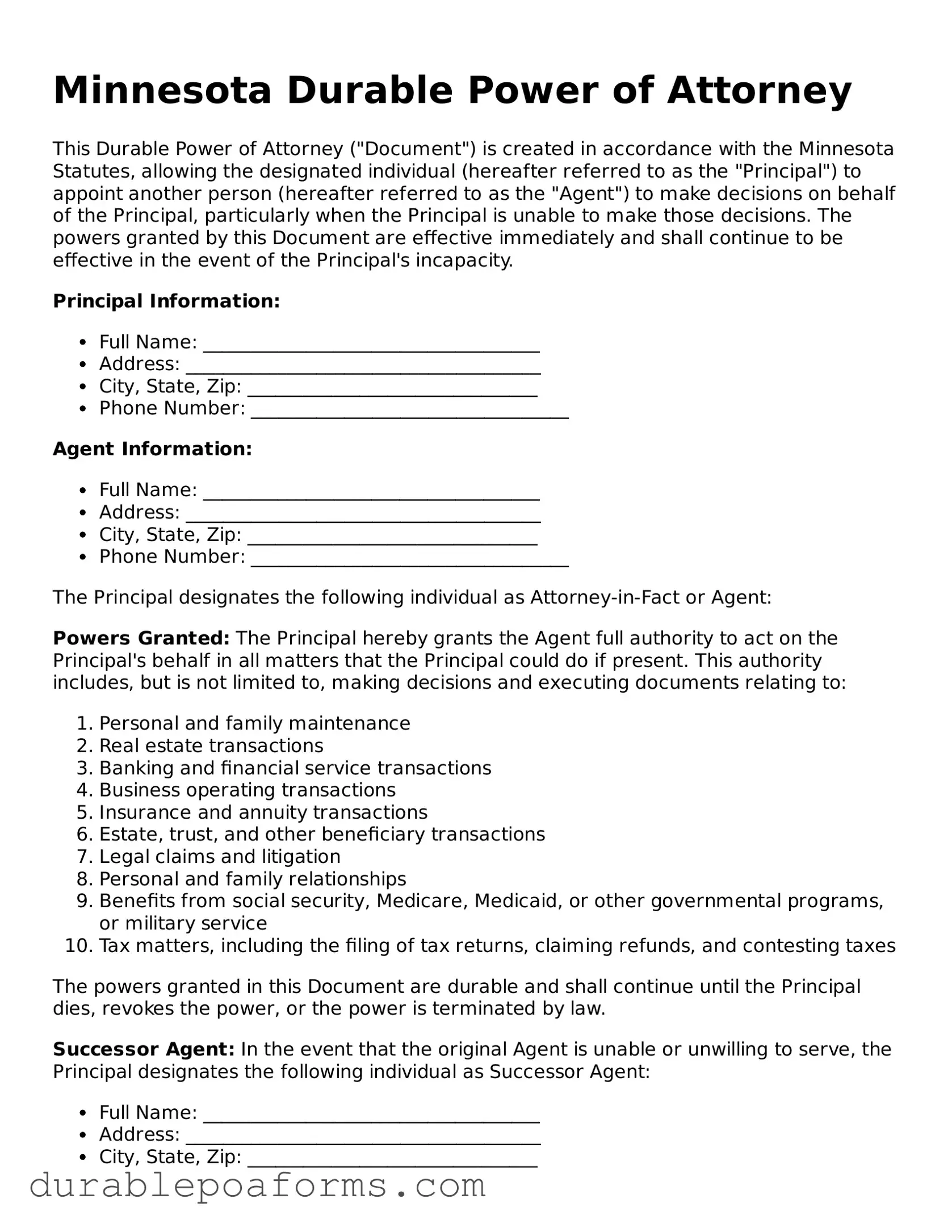Minnesota Durable Power of Attorney
This Durable Power of Attorney ("Document") is created in accordance with the Minnesota Statutes, allowing the designated individual (hereafter referred to as the "Principal") to appoint another person (hereafter referred to as the "Agent") to make decisions on behalf of the Principal, particularly when the Principal is unable to make those decisions. The powers granted by this Document are effective immediately and shall continue to be effective in the event of the Principal's incapacity.
Principal Information:
- Full Name: ____________________________________
- Address: ______________________________________
- City, State, Zip: _______________________________
- Phone Number: __________________________________
Agent Information:
- Full Name: ____________________________________
- Address: ______________________________________
- City, State, Zip: _______________________________
- Phone Number: __________________________________
The Principal designates the following individual as Attorney-in-Fact or Agent:
Powers Granted: The Principal hereby grants the Agent full authority to act on the Principal's behalf in all matters that the Principal could do if present. This authority includes, but is not limited to, making decisions and executing documents relating to:
- Personal and family maintenance
- Real estate transactions
- Banking and financial service transactions
- Business operating transactions
- Insurance and annuity transactions
- Estate, trust, and other beneficiary transactions
- Legal claims and litigation
- Personal and family relationships
- Benefits from social security, Medicare, Medicaid, or other governmental programs, or military service
- Tax matters, including the filing of tax returns, claiming refunds, and contesting taxes
The powers granted in this Document are durable and shall continue until the Principal dies, revokes the power, or the power is terminated by law.
Successor Agent: In the event that the original Agent is unable or unwilling to serve, the Principal designates the following individual as Successor Agent:
- Full Name: ____________________________________
- Address: ______________________________________
- City, State, Zip: _______________________________
- Phone Number: __________________________________
Signatures: This Document must be signed by the Principal and either notarized or witnessed by two adults who are not the Agent or related to the Principal by blood or marriage. The signatures below constitute acceptance of this appointment according to the Minnesota Statutes.
Principal's Signature: ___________________________ Date: ____________
Agent's Signature: _______________________________ Date: ____________
Successor Agent's Signature: _____________________ Date: ____________
State of Minnesota
County of ___________________
This document was acknowledged before me on (date) ______________ by (name of Principal) ____________________________.
_________________________________
(Signature of Notarial Officer)
Notary Public for the State of Minnesota
My commission expires: ______________
